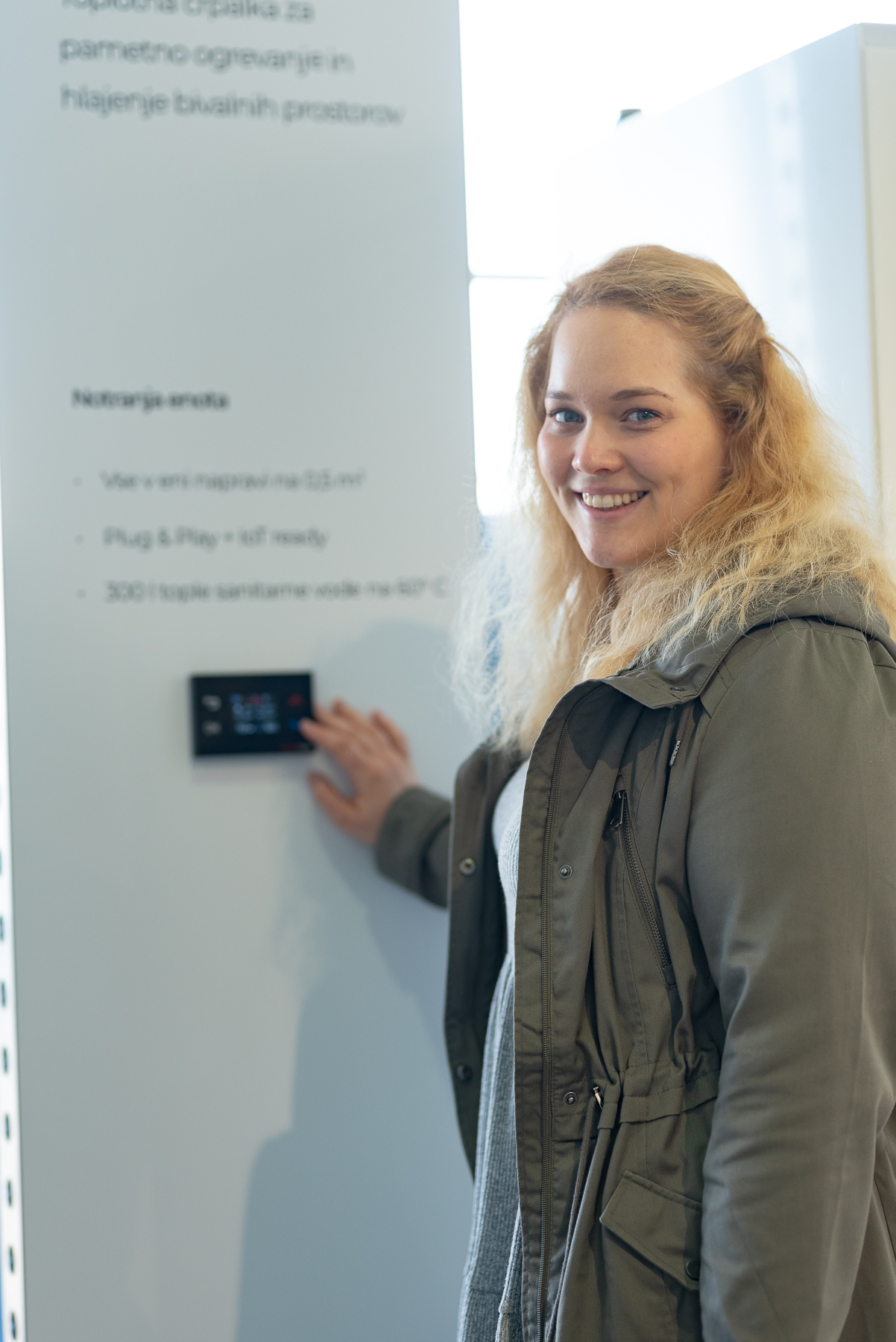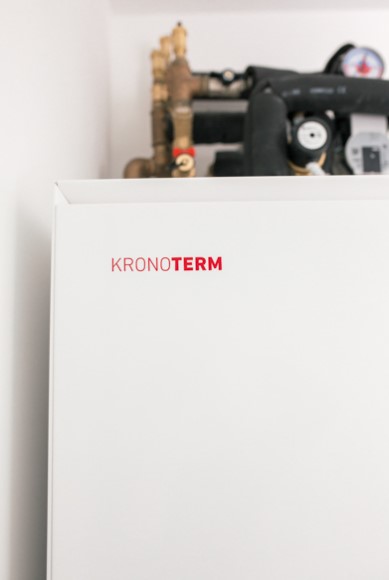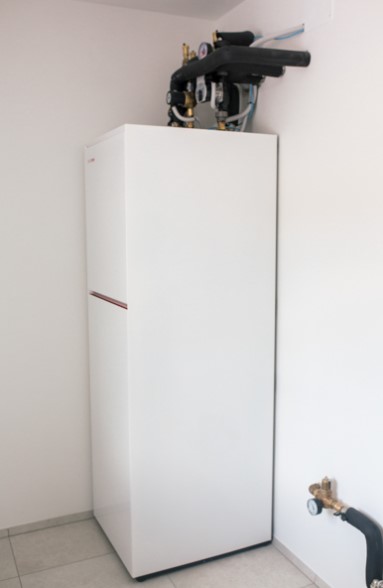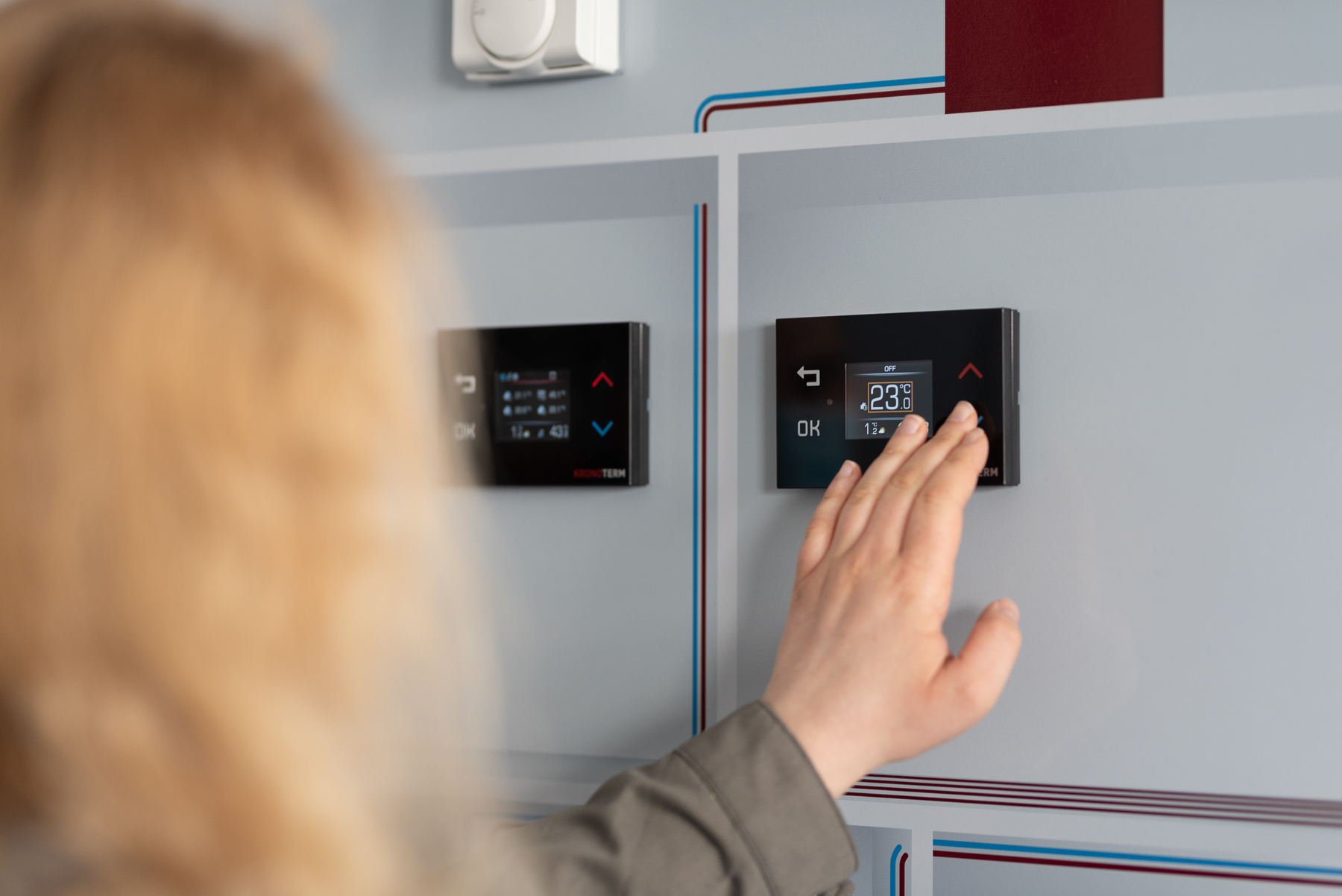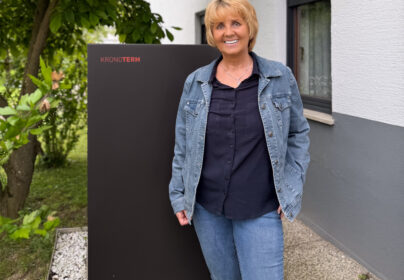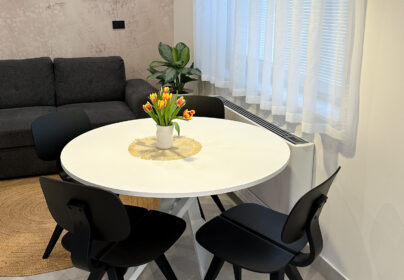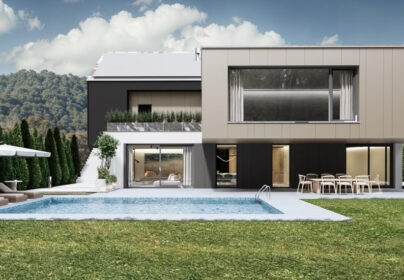Below are described two cooling methods provided by the ADAPT heat pump. The first method is cooling with radiators, and the second method is floor or wall cooling.
COOLING WITH RADIATORS
In simple terms, a radiator is very similar to the indoor unit of a conventional air conditioner. An additional external unit, as is necessary for a conventional air conditioner, is not required since the radiators are connected to the indoor unit of the heat pump. This means that we have only one external unit for both cooling and heating.
Nina doesn’t have this cooling method since she and her partner decided at the last minute to change the heat pump manufacturer. However, she would have preferred this method because now, in addition to the very aesthetic KRONOTERM external unit, there is also a completely unaesthetic external unit of the air conditioner.
FLOOR OR WALL COOLING
This is a cooling method through underfloor or wall heating, and Nina has also tried this method herself. We cool the space by circulating cooler water through the pipes of the underfloor heating. However, we must ensure that the temperature difference between the room and the floor is not more than 6 °C.
But what about condensation?
»Simulations have shown that for most climate conditions, which also apply to Slovenia, condensation is not expected. However, mechanical ventilation is necessary, and it must be ensured that the temperature difference between the cooled surface and the room is less than 6 °C. In other words, if you are cooling a room in which it is 26 °C, make sure not to cool the floor surfaces below 20 °C. We must be cautious in rooms where the air humidity is higher, for example, in bathrooms, where this cooling method is less suitable.«
Advantages of cooling through underfloor heating
For Nina, the biggest advantage is that it provides constant and even cooling. Cooling through underfloor heating is surface and even throughout the entire space, while air conditioners provide localized cooling. In simple terms, an air conditioner generally cools the area where it is located, so other areas are not equally well-cooled. With underfloor heating cooling, we don’t have this “issue” because underfloor heating is mostly distributed throughout all spaces, and consequently, all spaces cool equally.



